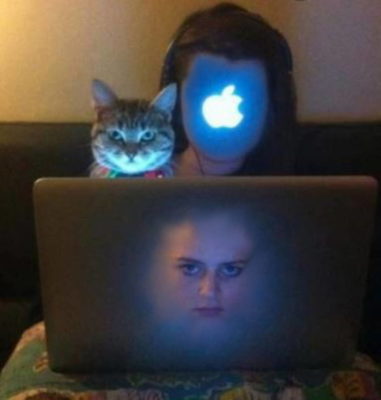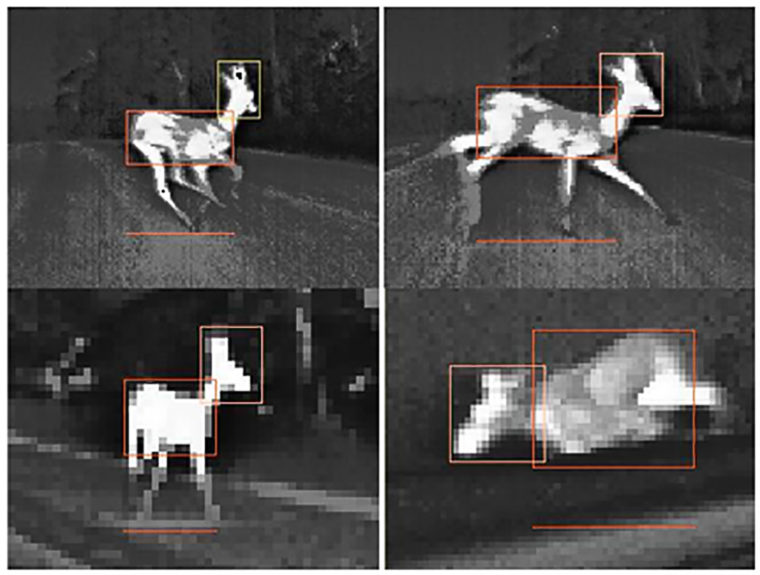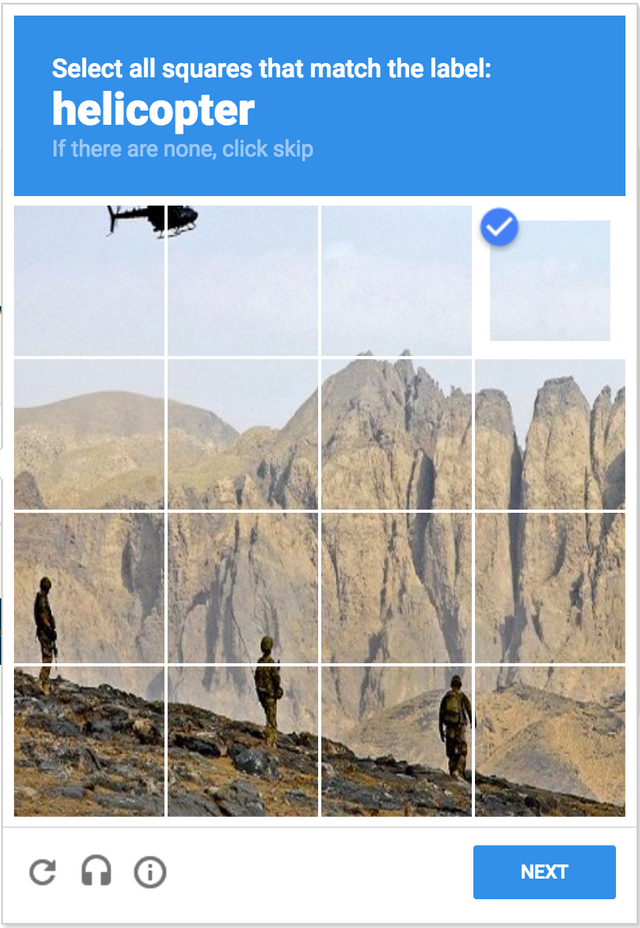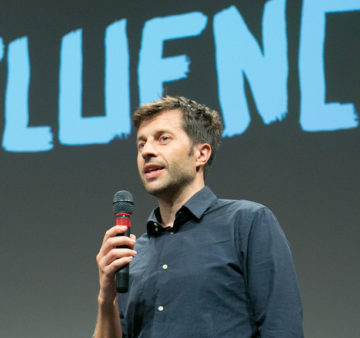Search
To search for an exact match, type the word or phrase you want in quotation marks.
A*DESK has been offering since 2002 contents about criticism and contemporary art. A*DESK has become consolidated thanks to all those who have believed in the project, all those who have followed us, debating, participating and collaborating. Many people have collaborated with A*DESK, and continue to do so. Their efforts, knowledge and belief in the project are what make it grow internationally. At A*DESK we have also generated work for over one hundred professionals in culture, from small collaborations with reviews and classes, to more prolonged and intense collaborations.
At A*DESK we believe in the need for free and universal access to culture and knowledge. We want to carry on being independent, remaining open to more ideas and opinions. If you believe in A*DESK, we need your backing to be able to continue. You can now participate in the project by supporting it. You can choose how much you want to contribute to the project.
You can decide how much you want to bring to the project.

For the most part of our history as human beings, forecasting meant listening carefully to the subtle hints given by bigger, often mysterious entities, getting in tune with them, so to speak. Yet, in the last ten years — or so —this process of “getting in tune” seems to have dramatically changed. Most past ages historians would dismiss a mere ten years time span as an irrelevant whim in the slow and long course of events, but what happened in this short time changed the way we look into the future. Exactly as it occurred with space, money, or people around us, we got used to some sort of immediate intimacy. You did it this morning when checking the weather through an online app instead of looking out the window and interpreting the thickness of clouds or where the wind blows. What we do as users tells only one side of the story, and not necessarily the most relevant, especially because it doesn’t make much sense to hold the isolated individual responsible for the collective implications of structural arrangements of infrastructures and their embedded temporality.
Predicting the future is the great business of the present. If Vladan Joler and Kate Crawford are right, the whole big data is only the entry point of a huge quantification process of human and non-human life at a planetary scale, which has prediction as its ultimate goal1. On another screen next to me, a Black Mirror episode is playing, it asks me to pick up a different storyline in an apparently uncanny maze of possibilities that are obviously already embedded in the script. The funny thing is that the whole narrative is about changing the future by taking different paths, however, at some point, the story itself appears to be controlled by an alien entity coming from the future, which — as an ultimate twist of fate —would be Netflix itself. I’m not sure whether this episode is scary, funny, self-consciously ironic, or mocking the fan of pay-per-view dystopias. What I’m pretty sure is that the future is a valuable currency in the current mainstream fiction economy. This seems to contradict what Mark Fisher used to say about the “cancellation of future” and the booming of nostalgia.2 Or maybe not, maybe it’s a new kind of nostalgia for the future, an emotional and practical inconsistency that actually make sense in a historical moment, when the lack of agency that most people feel spans over imagination itself, letting alone politically relevant action.

Autoliv-extraction-classification,unknown author, taken from https://www.extremetech.com/extreme/193402-what-is-night-vision-how-does-it-work-and-do-i-really-need-it-in-my-next-car
The obsession for the future certainly exposes some inability to deal with a messy present. I don’t want to sound too conclusive here, and the proof is that I’m myself involved in a little project whose aim is, indeed, playing with the future. The project is called Automated Control Wars (ACW), which is the brainchild of a small group of artists, scholars, and activists called Becoming. In the best tradition of speculative fiction, ACW is a workshop based-game aimed to materialize the real-but-as-yet-unnamed, the imagined-but-as-yet-not-real, or the yet-to-come through role-playing in a performative game, where different visions of the world are shaped as opposed strategies. Specific tactics or manoeuvres are then deployed by each role in a fight for survival in an increasingly complex environment, where fungi or autonomous machines have at least as much agency as the humans do.
In a series of subsequent iterations of the game, we have been designing some simple game dynamics — called “accelerators” —to connect existing technological and political issues with their projections in possible futures. It is just a little experiment that — depending on the occasion and details in the set-up —can work either as a didactic tool for critical thinking, as a scenario-building tool for experimental designers, a funny test-pool for artists and writers, or even as a narrative device to test new techno-political strategies.
Our experiment faces not only conceptual but also very practical challenges: how to envision a future that is not only solid enough to be plausible, but also able to tell us something new instead of being just a blurred projection of current expectations and assumptions? Because the 2030s won’t look like the 1970s, the 1980s or the 1990s. Will Facebook fall like ATT or TWA? Will it fall at all? Both the atomic age and space age arose and ended, until we understand that they were not really declining, but actually mutating. When you play, you very soon realise that the future can be hardly gamed, in every sense of the word. It can’t be played because we don’t really know how it will look like. But it cannot be fooled either, which is actually what even well-intentioned futurologists hope to do: exploiting possible futures in order to extract ideas and magically provide those strategies that we cannot come up within the present. Even then, state agencies with massive budgets are only able to foresee a small percentage of what actually is going to happen, so why should we even bother? And so, if predicting the future is pointless and politically futile, maybe it’s time to tear it apart.
For one of the lastest ACW sessions,3 I wrote some short texts about facts that are supposed to spin each round of the game. In one of them, set somewhere in the near future, clouds disappear from the atmosphere. I found the inspiration in an essay about weather control and how early computation was tightly linked to both the atomic age and to some experiments in weather observation, calculation, and prediction by writer and artist James Bridle4. My fictional clouds disappearance strangely resonated with a small fact that I didn’t know then, or I didn’t recall: the increasing number of people in need of assistance because of mid-flight clear-air turbulence. Apparently, planes are finding more and more of these turbulences, which make flights uncomfortable and plane design more complicated. In a dark twist of events, not only those turbulences appear to be caused by human activity (and the aviation industry in particular), but also they are harder and harder to predict. A less known fact nobody had expected. Not a big game-changer. A small fact that brings about patches. And patches over other patches in order to keep the regular business going.
The dystopian fiction, especially when gloomy and maximalist, is a major simplification. Not only does dystopia provide an easy way out of commitment in a nasty present, but also it makes us forget that the future is too messy to predict anyway. Building a consistent scenario obfuscates contradictory stances, mistakes, short-sighted decisions, greed and sheer stupidity, setting aside non-human large-scale factors which humans may not be fit to see, nor to understand. Now, no matter how tempting may a consistent scenario be, it looks like that even the most scientifically legitimate frameworks —such as climate change or, for that matter, the rise of global fascism —are mostly a convoluted patchwork of factors, and some of them are the unexpected output of opaquely intertwined systems that goes unnoticed by our senses or our understanding of the world. Climate change (as global fascism) is serious, probably very bad. It requires action, and yet it can’t be fully predicted5.
Of course, planners, concerned politicians, or social movements need trustworthy scenarios where all the factors at play are part of a zero-sum game.6 Yet, unlike many workshops about future scenarios that I have attended, ACW — our tiny and playful experiment —tries to go the opposite way, or at least that’s the potential I see in it. Instead of building consistency, it tears it apart. I call it the “adversarial approach”, in which different teams play against each other, according to mutually exclusive ideologies and sets of desires. The weird and the unthinkable are both possible in a scenario that is not necessarily a zero-sum game. And here is where the adversarial approach — applicable to ACW as well as to unconventional artist narratives —should be able to defy linear timelines and the master’s road map.7 Objective facts, like existing policies or the evolution of global technologies, may co-exist with different timelines taken from unofficial histories, subcultural creativity, fictional characters and inventions, or even ideas from visionary art or activist projects. Hopefully, this may push towards the uncanny valley of a present disguised as future.
The biggest challenge in this approach lies in the very unstable balance between things we know, and the grey area of the “unknowns”. Besides the obvious philosophical implications7, there’s a simpler question of technological imagination, so to speak, since seeing is not natural and must be trained. And when it comes to understand the complexity of a networked society in a quantified planet, we need new sets of skills to see lots of invisible things: dull infrastructures you just don’t notice, technology designed not to be seen, new power structures, undetectable geographies, machine bias, plus the unexpected results of the interaction between all of the above, billions of people, and their fantasies. There is not just one single story that encompasses such a complex tangle, for that reason, an adversarial approach might be an interesting way to keep it visible, afloat. In an adversarial game — although the same applies for unconventional research or art —,what we call “the future” becomes just a vantage point waiting to be challenged. First of all, in the ACW game, you enjoy the luxury of playing with your own identity, taking sides that are not necessarily yours in real life, which ultimately doesn’t really matter and, in fact, only increases the intensity of frictions. Then, when playing as a group of transhumanist libertarians or eco-accelerationists (for instance), you are forced to zoom in and all of a sudden, you find loose ends, clumsy soldering, gaps, and uneven sewings. Power structures don’t simply fade out, but rather take a different shape, made out of conflicting protocols, incompatible materialities and geographies, people’s ambitions or weaknesses, dramas and dreams, fears and resistance, or even rebellion by both humans and non-human entities. Not having a clear scenario, having different types of agency and stories, playing with the possible and the fictional, might be frustrating for policymakers or activists with a pressing agenda, but when “the future” is neither a concealed projection of our current knowledge and frustrations, nor a harmless dystopian scenario, we may find ourselves closer to “futurability”, or the attitude of being finally able, enabled, empowered8. Only by reclaiming adversarial, crazy, non-zero-sum forms of dreams and imagination, we will be able to reclaim a truly humane (and not necessarily human) political agency.

Helicaptcha,image automatically generated by reCaptcha software, found in a tweet by user @lachrob, https://twitter.com/lachrob/status/831691552028241921
1Kate Crawford & Vladan Joler. “Anatomy of an AI System: The Amazon Echo As An Anatomical Map of Human Labor, Data and Planetary Resources,” AI Now Institute and Share Lab, (September 7, 2018) https://anatomyof.ai
2Mark Fisher, Ghosts of My Life: Writings on Depression, Hauntology and Lost Futures (Zero Books, Winchester, 2014).
3It took place in April 2019 at the STRP festival in Eindhoven https://strp.nl/
4First published as James Bridle, “Cloud History, Cloud Thinking” in http://cloudindx.com/history/(2016)
5 In game theory and economic theory, a zero-sum game is a mathematical representation of a situation in which each participant gain or loss of utility is exactly balanced by the losses or gains of the utility of the other participants. If the total gains of the participants are added up and the total losses are subtracted, they will sum to zero.
6 David Wallace-Wells, “The Cautious Case for Climate Optimism (From a Climate Alarmist)”, NYMag – Intelligencer (February 4, 2019)http://nymag.com/intelligencer/2019/02/book-excerpt-the-uninhabitable-earth-david-wallace-wells.html
7 On the relationship between maps, clocks and (white) power, see the work of Black Quantum Futurism.
8 The unknowns should also include the “unknown knowns”, a short formula used by philosopher Slavoj Žižek (“What Rumsfeld Doesn’t Know That He Knows About Abu Ghraib”. In These Times, (May 21, 2004) See http://inthesetimes.com/article/747/what_rumsfeld_doesn_know_that_he_knows_about_abu_ghraib. The formula succinctly sums up his extensive work on ideology. See Žižek, Slavoj. The Sublime Object of Ideology, Verso, London, 1989.
9 Franco Berardi, Futurability: The Age of Impotence and the Horizon of Possibility(London , UK; New York, USA: Verso, 2017).
(Highlighted image: Swappp, first time published by https://imgur.com/user/DylanIsChillin)

Bani Brusadin is a Barcelona-based curator, educator and researcher sailing on the troubled waters where contemporary art, a networked society, user cultures, and politics meet (and sometimes clash). Together with artists Eva & Franco Mattes, he founded and curates The Influencers, a festival about unconventional art, guerrilla communication and radical entertainment held at the CCCB since 2004. In the last few years he has been part of Masters & Servers (2014-2016) and The New Networked Normal (2017-2019), two European projects devoted to the evolution of digital cultures and politics. In 2018 he was appointed co-curator of the new Tentacular festival at Matadero Madrid. In the past, he has been involved in different art and activist projects, among them Las Agencias and Yomango (2002-2007). He currently teaches at the University of Barcelona and Elisava Design School.
"A desk is a dangerous place from which to watch the world" (John Le Carré)